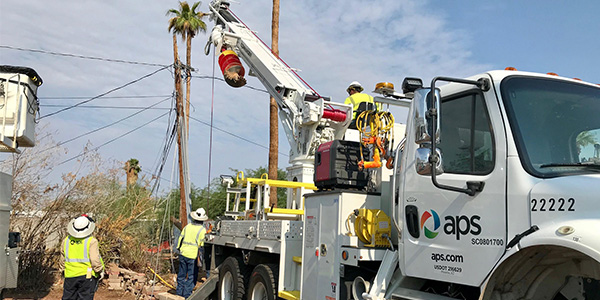What to Do When ACE Conflicts with Interconnection Frequency?
By Rich Heidorn Jr.
The NERC Standards Committee on Wednesday postponed action on Arizona Public Service’s request to amend BAL-002-3 (Disturbance Control Standard — Contingency reserve for recovery from a balancing contingency event) after several members said they wanted to add the technical justification for its rejection to the record.
APS’ standards authorization request (SAR) proposed that compliance with BAL-002-2 requirement R1 would be reached once interconnection frequency has recovered, saying the change was needed to prevent the recovery of one event from contributing to the creation of another event.
Asked by the SC to provide a technical review, the Operating Committee in March recommended rejection of the SAR, citing advice from its the Resources Subcommittee (RS). “The recommended modification of R1.1 of this standard to include interconnection frequency assessment will modify the original intent of [the] standard, which is the demonstration of the deployment of reserves to recover from reportable balancing contingency events (RBCEs),” the OC said, adding, “The concerns raised in this SAR can be addressed by other means.”
Sean Bodkin, NERC compliance policy manager for Dominion Resources Services, asked for the delay, saying the technical reasons for the rejection should be added to the record. Other committee members also sought additional information on the “other means” cited by the OC.
“I’m not a BAL expert, but it looked like [APS] had a legitimate concern,” said Steve Rueckert, director of standards for the Western Electricity Coordinating Council.
Duke Energy Carolinas’ Tom Pruitt, chair of the RS, said there are simpler and more effective solutions to the situation identified by APS.
“There is an option to go through compliance guidance and develop a compliance guidance document. … There is an option for a BA [balancing authority] with the existing standard to simply execute an emergency assistance agreement with one of its neighbors for this situation. No modification of the standard at all is needed…
“The bottom line is, [under the SAR,] the BA would be exempt from balancing his BA area and that goes right to the heart of the job of a balancing authority,” Pruitt continued. “If he’s not required to balance his BA, we’re missing the boat here.”
Gary Nolan, an APS regulatory compliance adviser who wrote the SAR, told the SC there were “some differences of opinion and some misunderstandings” of his company’s concerns.
APS was not seeking to have a BA shirk its responsibilities, he said, but attempting to draw attention to a situation in which a BA’s area control error (ACE) is low while the interconnection frequency is high.
“BAL-001 R2 has a balancing authority … responding to what the interconnection needs as opposed to what the balancing authority needs. … When [interconnection] frequency is high, a balancing authority is asked not to correct their ACE and make frequency worse but rather to — if their ACE is low, it’s okay for them to remain low if [interconnection] frequency is high,” he explained.
Nolan said BAL-002 could be read to direct a BA in that situation to “increase their generation — or possibly, if it gets to a point where they’re very near to the deadline, they may need to shed load in order to recover their ACE in time. … Shedding load should be something we would be abhorrent to and not want to do. … That’s not going to help the interconnection … when frequency is high.”
“I get it, and I can see where there’s an issue,” Rueckert responded. “But we need to remember that the Standards Committee is not a technical committee; we’re kind of a process committee, and I don’t know that we should be making a decision on this SAR on technical terms. I think that is the RS and the OC.”
Bodkin agreed. “I know I am completely unqualified to make any technical justification on the BAL standards and that’s the reason I actually wanted to see the technical information from the RS in the record.”
Revised Standards Grading Tool Approved
The SC also approved a revised Standards Grading Spreadsheet for the Periodic Review Standing Review Team to use in evaluating standards’ requirements.
A working group formed last September revised ambiguous questions; eliminated duplicate questions; converted multipart questions into single questions; and added a reference section linking to source documents. It is the first update of the tool since its development in 2016.
However, the tool won’t get used immediately because of the decision to suspend the review team’s work until next year to avoid conflicts with the Standards Efficiency Review. (See “Standards Grading Process on ‘Pause,’” NERC Standards Committee Briefs: March 20, 2019.)




